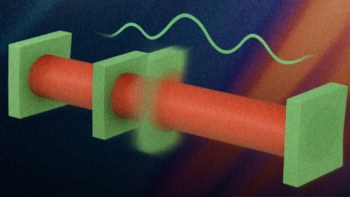
Painless jets of plasma could come to replace the drill in the fight against harmful bacteria in dentistry. That is according to researchers in Germany who have created a futuristic device that they say should be available to dentists within three years.
Cavities can form in teeth as bacteria penetrate through their enamel coating to an inner region that consists of a pulpy material known as dentin. When this material begins to decay, dentists normally drill away the damaged enamel and dentin, chemically disinfect the area, and then protect it with a resin filling.
Scientists in Homburg and Leipzig now say that low-temperature plasmas can kill these bacteria, potentially stopping cavities forming in the initial phase, without the patient feeling pain in the process. “Plasmas may provide us with new possibilities for destroying bacterial biofilms, thereby preserving more dentin,” says Stefan Rupf of Saarland University’s Clinic of Operative Dentistry.
Cool comfort
Plasmas – which are clouds of highly ionized gas – are already used by medical professionals to sterilize surgical equipment and even parts of the human body during operations. In dentistry, however, it is problematic to use plasmas because they can damage the dental pulp inside a tooth as their formation usually requires temperatures of at least 100 °C.
Rupf and his colleagues exploited a low-temperature plasma jet developed at the Leibniz Institute of Surface Modification (IOM). “We use a pulsed plasma that switches on and off with high frequency,” explains Axel Schindler, leader of the IOM group that developed the low-temperature source. “Only in the on phase does the microwave energy heat the plasma, and we use a high flow of gases that cools the surface when the plasma is switched off.”
The cool plasma was tested on bacteria both in cultures and adhered to dentin slices. Growth was completely inhibited in the two types of bacteria, while bacterial colonies were reduced 10,000-fold in the dentin slices. The adherence to tubules allowed some colonies to survive on all the dentin slices. However, more bacteria died when exposed to the plasma jet for longer, which convinces Rupf that this could help dentists reduce or avoid drilling.
The plasma warmed the dentin surface to about 44 °C, but this should not damage the tooth interior. “The pulp is not critically heated up,” Schindler says. “When this reaches patients, they will feel a gas flow that is a little bit warm.”
Dental block
Schindler hopes to find an industrial partner and commercialize dental plasma jets within three years. While laser equipment for similar applications is already available for about €10,000, the IOM researcher believes a plasma tool would cost just a few thousand euros. “Microwave excitation is cheap, simple and safe – the same technology is used to heat up food,” he says.
Gerrit Kroesen of the Eindhoven University of Technology believes dentists and other medical professionals will indeed use plasmas for disinfection, although not anytime soon. “All kinds of qualification and certification issues have to be tackled,” he told physicsworld.com.
This work is to be published in the Journal of Medical Microbiology.



